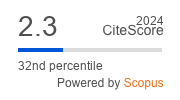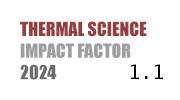THERMAL SCIENCE
International Scientific Journal
DESIGN AND VALIDATION OF A HIGH SPEED, HIGH FLEXIBILITY EXCITATION SAMPLING BRUSH FOR DEEP SPACE SAMPLING
ABSTRACT
Asteroids are usually sampled by touch due to their small size and weak gravity, and the sampling time is short. Flexible brush high speed excitation sampling is an efficient and reliable sampling method. This paper designs a brush-type symmetrical rotating double-wheel structure brush excitation sampling mechanism for asteroid surface touch sampling in a short time. According to the characteristics of the brush sampling mechanism, a mathematical model for calculating the sampling volume of the sampling mechanism with multiple parameters is established. The sampling volume is verified by discrete element simulation method and microgravity drop tower test. The results show that for different gradations of stellar soil, the theoretical calculation and verification results are relatively consistent. It shows that the theoretical model can be used to estimate the sampling volume during brush excitation sampling. The results of this paper provide a basis for the subsequent asteroid sampling return.
KEYWORDS
PAPER SUBMITTED: 2024-11-26
PAPER REVISED: 2024-11-30
PAPER ACCEPTED: 2024-12-11
PUBLISHED ONLINE: 2025-06-01
THERMAL SCIENCE YEAR
2025, VOLUME
29, ISSUE
Issue 2, PAGES [1423 - 1428]
- Yu, H. M., et al., Conceptual Design of China's Small Celestial Body Exploration Mission, Space International, 9 (2021), 3, pp. 4-9
- Zhang, R. Q., et al., The Development Overview of Asteroid Exploration, Journal of Deep Space Exploration, 6 (2019), 5, pp. 417-423
- Yada, T., et al., Hayabusa-Returned Sample Curation in The Planetary Material Sample Curation Facility of JAXA, Meteoritics and Planetary Science, 49 (2014), 2, pp. 135-153
- Tsuda, Y., et al., System Design of The Hayabusa 2 - Asteroid Sample Return Mission 1999 JU3, Acta Astronautica, 91 (2013), 2, pp.356-362
- Lauretta, D. S., et al., OSIRIS-REx: Sample Return from Asteroid (101955) Bennu, Space Science Reviews, 212 (2017), 1, pp. 925-984
- Bonitz, R., The Brush Wheel Sampler - A Sampling Device for Small-Body Touch-and-Go Missions, Proceedings, IEEE Aerospace Conference, Big Sky, Mont., USA, 2012, pp.1-6
- Zhang, J., et al., A Sweeping and Grinding Combined Hybrid Sampler for Asteroid Sample Return Mission, Acta Astronautica, 198 (2022), 3, pp. 329-346
- Kato, H., et al., Subsurface Sampling Robot for Time-limited Asteroid Exploration, Proceedings, IEEE/ RSJ International Conference on Intelligent Robots and Systems (IROS), Las Vegas, New., USA, 2020, pp. 1925-1932
- Zhang, W., et al., Inchworm Drilling System for Planetary Subsurface Exploration, IEEE/ASME Transactions on Mechatronics, 25 (2020), 2, pp. 837-847
- Kawamoto, H., Sampling of Small Regolith Particles from Asteroids Utilizing an Alternative Electrostatic Field and Electrostatic Traveling Wave, Journal of Aerospace Engineering, 27 (2014), 3, pp. 631-635
- Nallapu, R. T., et al., Optimized Bucket Wheel Design for Asteroid Excavation, Proceedings, International Astronautical Congress, Guadalajura, Mexico, 2016
- Schafer, C. M., et al., Numerical Simulations of Regolith Sampling Processes, Planetary and Space Science, 141 (2017), 2, pp. 35-44
- Wei, Q., et al., Simulation Analysis and Experiment of Sampling Process of Wheel Brush Sampler Based on Discrete Element Method, Journal of Physics: Conference Series, 2137 (2021), 1, 012058
- Li, J., et al., A Multisite and Anti-Cross-Contamination Brief Touch Sampler for Asteroid Sample Return Mission, Acta Astronautica, 201 (2022), Dec., pp. 317-328
- Luo, H., et al., Numerical Simulation and Experimental Research on the Wheel Brush Sampling Process of an Asteroid Sampler, Frontiers of Mechanical Engineering, 18 (2023), 2, ID16
- Sitepu, E., et al., Granular Sample Collection Simulation Via Counter Rotating Wheels Sampler for Small- Sized System at Reduced Gravity Environment, Planetary and Space Science, 237 (2023), 2, ID105778

